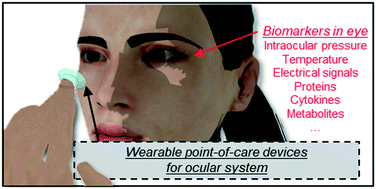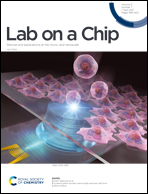Recent progress on wearable point-of-care devices for ocular systems
Abstract
The eye is a complex sensory organ that contains abundant information for specific diseases and pathological responses. It has emerged as a facile biological interface for wearable healthcare platforms because of its excellent accessibility. Recent advances in electronic devices have led to the extensive research of point-of-care (POC) systems for diagnosing and monitoring diseases by detecting the biomarkers within the eye. Among these systems, contact lenses, which make direct contact with the ocular surfaces, have been utilized as one of the promising candidates for non-invasive POC testing of various diseases. The continuous and long-term measurement from the sensor allows the patients to manage their symptoms in an effective and convenient way. Herein, we review the progress of contact lens sensors in terms of the materials, methodologies, device designs, and target biomarkers. The anatomical structure and biological mechanisms of the eye are also discussed to provide a comprehensive understanding of the principles of contact lens sensors. Intraocular pressure and glucose, which are the representative biomarkers found in the eyes, can be measured with the biosensors integrated with contact lenses for the diagnosis of glaucoma and diabetes. Furthermore, contact lens sensors for various general pathologies as well as other ocular diseases are also considered, thereby providing the prospects for further developments of smart contact lenses as a future POC system.

- This article is part of the themed collection: Lab on a Chip HOT Articles 2021


 Please wait while we load your content...
Please wait while we load your content...